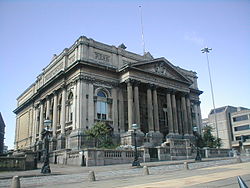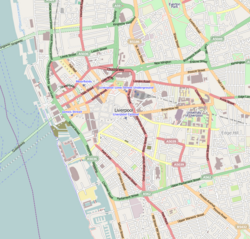| County Sessions House | |
|---|---|
 County Sessions House | |
| General information | |
| Architectural style | Neoclassical |
| Location | William Brown Street, Liverpool, England |
| Coordinates | 53°24′36.5″N02°58′44.5″W / 53.410139°N 2.979028°W |
| Year(s) built | 1882–84 |
| Design and construction | |
| Architect(s) | F & G Holme |
| Designations | |
Listed Building – Grade II* | |
| Official name | Sessions House |
| Designated | 14 March 1975 |
| Reference no. | 1063783 |
The County Sessions House is a former courthouse in Liverpool, England. It stands at the top of William Brown Street and is adjacent to the Walker Art Gallery, the Steble Fountain and Wellington's Column. It now provides office and storage space for the gallery. The Session House is recorded in the National Heritage List for England as a designated Grade II* listed building. [1]




